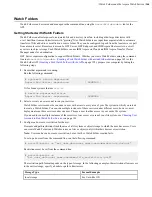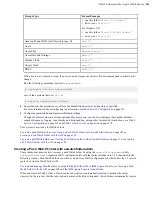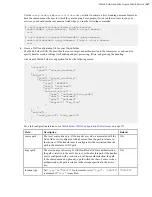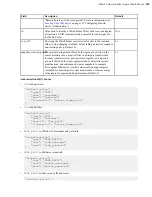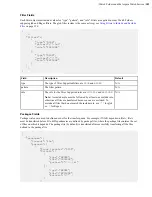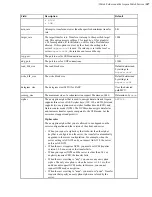
| Watch Folders and the Aspera Watch Service |
173
Field
Description
Default
username and password, Shares credentials, or an access key ID
and secret.
user
The username for authentication.
Required
. Depending on the
type of authentication, it is the transfer user's username, Node API
username, Shares username, or access key ID.
N/A
pass
The password for authentication, depending on the type of
authentication.
N/A
target path
The target directory on the local computer, relative to the transfer
user's docroot.
N/A
watchd identifier
The daemon associated with the Watch Service that is used to
monitor the file system. Optional. Required only when you want
to use a Watch Service that is run by a user who is not associated
with the Node API user or access key.
The system user that
is associated with
the Node API user
or access key.
scan_period
The time between file system scans of the watches (from end
of one to start of the next). These scans are independent of the
snapshot minimum interval and snapshot minimum changes to
ensure that changes are identified. To never scan (asperawatchd
relies entirely on file notifications), set to "infinite". On file
systems without file notifications, such as object storage, mounted
storage (NFS), Solaris, AIX, and Isilon, file system scans triggered
by the scan period are used to detect file changes. In this case,
set the scan period to frequently scan for changes. On operating
systems that support file notifications (Linux, Windows, macOS),
asperawatchd uses the file notifications as the primary means for
detecting changes, and the scan period serves as a backup. In this
case, the default value of 30 minutes is usually acceptable and
no change is necessary. To never scan, and rely entirely on file
notifications, set to
infinite
.
For pull Watch Folders, file systems scans that are triggered by
scan_period are the sole means for detecting changes in the source
directory.
Lower scan periods detect changes faster but can result in greater
resource consumption, particularly for object storage.
Note:
The value for scan period cannot be empty, otherwise the
configuration is rejected.
30m
Save the configuration file. The path to the configuration file is used in the next step.
5.
Create the Watch Folder.
# /opt/aspera/bin/aswatchfolderadmin create-folder
daemon
-f
json_file
Where
daemon
is the user that is running the Watch Folder services and
json_file
is the path to the Watch Folder
configuration file. If you do not know the daemon, retrieve a list of running daemons by running the following
command:
# /opt/aspera/bin/aswatchfolderadmin query-daemons
[aswatchfolderadmin query-daemons] Found a single daemon:
root






